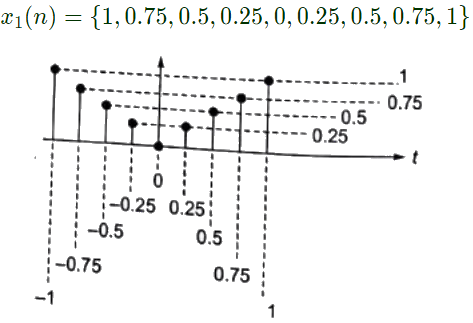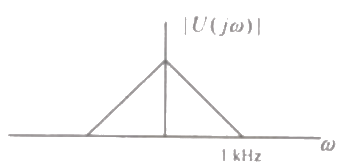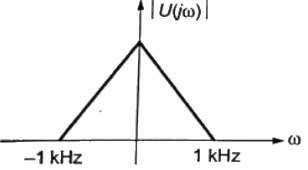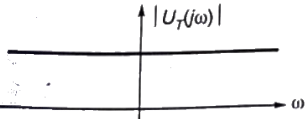Additional Information about Previous Year Questions- Sampling for Electrical Engineering (EE) Preparation
Previous Year Questions- Sampling Free PDF Download
The Previous Year Questions- Sampling is an invaluable resource that delves deep into the core of the Electrical Engineering (EE) exam.
These study notes are curated by experts and cover all the essential topics and concepts, making your preparation more efficient and effective.
With the help of these notes, you can grasp complex subjects quickly, revise important points easily,
and reinforce your understanding of key concepts. The study notes are presented in a concise and easy-to-understand manner,
allowing you to optimize your learning process. Whether you're looking for best-recommended books, sample papers, study material,
or toppers' notes, this PDF has got you covered. Download the Previous Year Questions- Sampling now and kickstart your journey towards success in the Electrical Engineering (EE) exam.
Importance of Previous Year Questions- Sampling
The importance of Previous Year Questions- Sampling cannot be overstated, especially for Electrical Engineering (EE) aspirants.
This document holds the key to success in the Electrical Engineering (EE) exam.
It offers a detailed understanding of the concept, providing invaluable insights into the topic.
By knowing the concepts well in advance, students can plan their preparation effectively.
Utilize this indispensable guide for a well-rounded preparation and achieve your desired results.
Previous Year Questions- Sampling Notes
Previous Year Questions- Sampling Notes offer in-depth insights into the specific topic to help you master it with ease.
This comprehensive document covers all aspects related to Previous Year Questions- Sampling.
It includes detailed information about the exam syllabus, recommended books, and study materials for a well-rounded preparation.
Practice papers and question papers enable you to assess your progress effectively.
Additionally, the paper analysis provides valuable tips for tackling the exam strategically.
Access to Toppers' notes gives you an edge in understanding complex concepts.
Whether you're a beginner or aiming for advanced proficiency, Previous Year Questions- Sampling Notes on EduRev are your ultimate resource for success.
Previous Year Questions- Sampling Electrical Engineering (EE)
The "Previous Year Questions- Sampling Electrical Engineering (EE) Questions" guide is a valuable resource for all aspiring students preparing for the
Electrical Engineering (EE) exam. It focuses on providing a wide range of practice questions to help students gauge
their understanding of the exam topics. These questions cover the entire syllabus, ensuring comprehensive preparation.
The guide includes previous years' question papers for students to familiarize themselves with the exam's format and difficulty level.
Additionally, it offers subject-specific question banks, allowing students to focus on weak areas and improve their performance.
Study Previous Year Questions- Sampling on the App
Students of Electrical Engineering (EE) can study Previous Year Questions- Sampling alongwith tests & analysis from the EduRev app,
which will help them while preparing for their exam. Apart from the Previous Year Questions- Sampling,
students can also utilize the EduRev App for other study materials such as previous year question papers, syllabus, important questions, etc.
The EduRev App will make your learning easier as you can access it from anywhere you want.
The content of Previous Year Questions- Sampling is prepared as per the latest Electrical Engineering (EE) syllabus.
 and other frequency component.
and other frequency component. Given cut-off frequency of LPF = 100 Hz
Given cut-off frequency of LPF = 100 Hz These signals are sampled with a sampling period of T = 0.25 seconds to obtain discretetime signals x1[n] and x2[n], respectively. Which one of the following statements is true? (2018)
These signals are sampled with a sampling period of T = 0.25 seconds to obtain discretetime signals x1[n] and x2[n], respectively. Which one of the following statements is true? (2018)
 Ts = sampling time-period = 0.25 sec
Ts = sampling time-period = 0.25 sec

 Since, x1(n) is having one more non-zero sample of amplitude '1' as compared to x2(n). Therefore, energy of x1(n) greater than energy of x2(n).
Since, x1(n) is having one more non-zero sample of amplitude '1' as compared to x2(n). Therefore, energy of x1(n) greater than energy of x2(n). (a) 1000 samples/s
(a) 1000 samples/s From the above block diagram,
From the above block diagram,


 Thus, H(ω) is a low pass filter and it will pass frequency, component of Z(ω) upt 1500π rad/sec.
Thus, H(ω) is a low pass filter and it will pass frequency, component of Z(ω) upt 1500π rad/sec. Therefore, maximum frequency component of y(t) is
Therefore, maximum frequency component of y(t) is 
 For the system shown above, the minimum sampling rate required to sample y(t), so that y(t) can be uniquely reconstructed from its samples, is (SET-2 (2016))
For the system shown above, the minimum sampling rate required to sample y(t), so that y(t) can be uniquely reconstructed from its samples, is (SET-2 (2016))
 The filtered out sinusoidal signal has 20 Hz frequency, the sampling must be under sampling. The output signal which is an under sampled signal with sampling frequency 50 Hz is
The filtered out sinusoidal signal has 20 Hz frequency, the sampling must be under sampling. The output signal which is an under sampled signal with sampling frequency 50 Hz is

 Then minimum sampling frequency satisfying the nyquist criterion is 7 * 2 = 14Hz.
Then minimum sampling frequency satisfying the nyquist criterion is 7 * 2 = 14Hz.
 (a)
(a) 



 Given that, sampling interval = 1 msec
Given that, sampling interval = 1 msec Therefore sampling frequency
Therefore sampling frequency after sampling new signal in frequency domain
after sampling new signal in frequency domain Therefore, spectrum of sampled signal will be
Therefore, spectrum of sampled signal will be

























